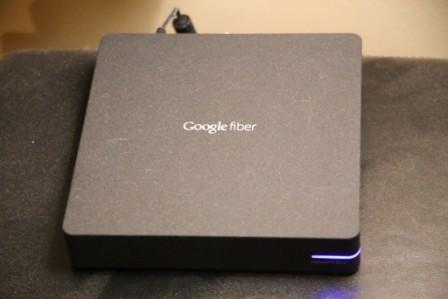Google Fiber Confronts the Slow, Costly Realities of Wireline Technology

Sometimes, it seems like emerging technology can make (virtually) anything out of (virtually) nothing. In the last two decades, internet giants like Google have built their empires from the ground up, pioneering products in industries that were nonexistent in the mid-nineties. Despite the seeming limitlessness of emerging technology, there are always physical limits on the ingenuity of companies like Google.

Earlier this month, Market Watch reported that Alphabet Inc.’s cable television and internet provider, Google Fiber, was on the brink of an existential crisis [1]. The crisis – brought on by the physical and economic difficulties of installing fiber cable networks – is prompting Google Fiber to reexamine its use of wireline technology to provide television and internet connections to its 120,000 subscribers.
Industry insiders have long been skeptical of Google’s foray into cable. Google originally described Google Fiber, which began as a small-scale cable service in Kansas City, as an experimental project. The project was, however, a success and, in 2012, Google executive chairman Eric Schmidt told a conference that: “It’s actually not an experiment, we’re actually running it as a business” [2].
With the backing of Google and, beginning in 2015, Alphabet, Inc., Google Fiber expanded beyond Kansas City into Austin, Provo, Atlanta, Charlotte, Raleigh, Nashville, Salt Lake City, and San Antonio. The company still has plans to continue expanding its service to at least a dozen other cities, including urban hubs like Los Angles, Chicago, and Dallas.
According to Market Watch, these plans may be put on hold as Google Fiber reevaluates its provider strategy. Laying wires is hard, dirty work. Although Alphabet, Inc. has other hardware projects – it works with manufacturers like Acer, Inc. and Samsung to produce Chromebook, for example –

Google Fiber is one of its least sexy ventures. Laying wires is more about persistence and sales than about ingenuity and innovation (Google’s best attributes).
After becoming a viable Google subsidiary in 2012, Google Fiber found installing cable more time-consuming and more expensive than it initially anticipated. Jonathan Reichental, chief technology officer for the City of Palo Alto, told Market Watch that: “If you’re in the telecommunications industry for 150 years, there are no surprises here, but if you’re a software company getting into the business for the first time, this is a completely new world” [1].
Google Fiber has suspended projects in San Jose, and Portland, Oregon, as it looks into alternative ways to deliver high speed internet to subscribers, including wireless options like mobile broadband. Market Watch reports that: “Google Fiber is hoping to use wireless technology to connect homes rather than underground fiber-optic cables, according to a person familiar with the matter” [1].

Although wireless technology is, arguably, easier to deploy, the current mobile broadband networks fall far short of the 1,000 Mbps speeds Google Fiber currently promises subscribers. Google is, apparently, also reaching out to cities and power companies to gain access to the cable networks they’ve already built.
Leasing cable is, perhaps, a more realistic approach for the fledgling cable provider.




